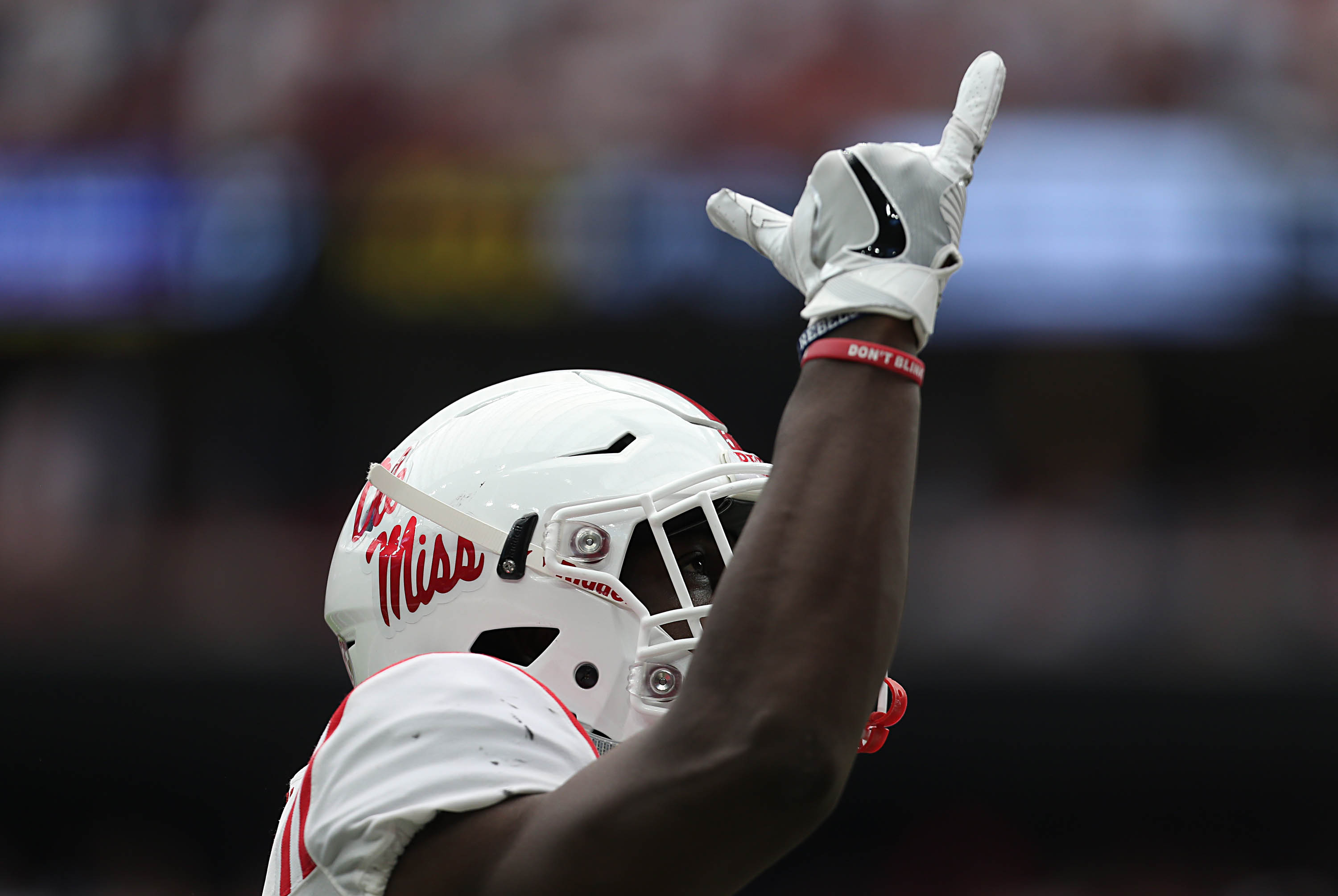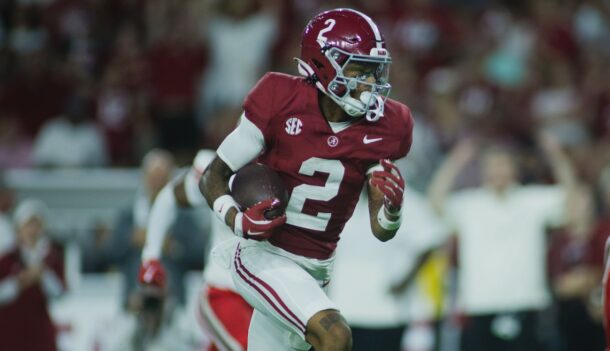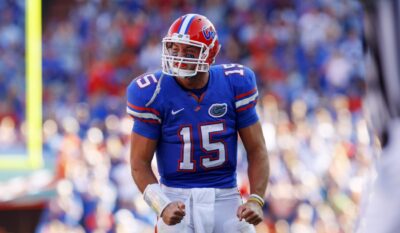
Alabama football: Why Ole Miss has been able to somewhat crack Nick Saban’s defense … and can they do it again?
By Rick Stavig
Published:
From 2014 through 2016, Ole Miss vs. Alabama was one of the premier matchups of the college football season. The Rebels actually beat the Tide in both ’14 and ’15, and they were up 24-3 at one point in ’16. For the first time ever, it appeared that the two flagship schools from the heart of the deep south were finally developing a rivalry.
Had the Rebels won in 2016, they would’ve been the first team to beat Nick Saban three times in a row since Joe Tiller’s Drew Brees-led Purdue Boilermakers defeated Saban’s Michigan State Spartans from ’97-’99. Alas, Saban and the Tide came through in the second half that year and won 48-43.
Last year, with the Rebels reeling from a tumultuous offseason after an NCAA investigation reached a fever pitch, awaiting sanctions and without a full-time head coach thanks to Hugh Freeze’s off-the-field escapades, the Tide thumped Ole Miss 66-3 in Tuscaloosa. You could tell it was the sort of game in which Saban and Alabama wanted to remind the Rebels exactly where they were in the pecking order of the SEC. That they weren’t, in fact, rivals.
The 2018 matchup of Tide vs. Rebels likely won’t be as one-sided as the 2017 matchup. I’m not predicting Ole Miss will win, mind you; I’m merely saying I don’t think ‘Bama wins by 63 points again. Because the Rebels are a better team – offensively – than they were last year, by a considerable margin. And Ole Miss, aside from 2017, has been able to do what most others have not – crack the Saban defense.
Naturally, coach Matt Luke and company asked themselves heading into this week: How did we beat Alabama in ’14 and ’15, and can we replicate that?
Well, first of all, Ole Miss was able to pass the ball very successfully and received superb play from their QBs. Between Bo Wallace in ’14 and Chad Kelly in ’15 and ’16, Rebel QBs completed just less than 60 percent of their passes for 1,013 yards with 9 TDs and no picks. In ’15 and ’16, especially, they were also very competent throwing the ball deep and could really take the top off a defense.

The Rebels’ current QB, Jordan Ta’amu, has been fantastic so far in 2018, completing just less than 70 percent of his passes for 784 yards (12.1 per attempt) with 7 TDs and no picks. As a deep ball passer, he has been outstanding, completing 11 of 18 attempts of 20 yards or more for 473 yards with 6 TDs and 0 INTs.
From ’14 through ’16, the passing attack was successful not only because of superb QB play. Ole Miss had big, physical WRs who could win one-on-one matchups downfield. Guys like Laquon Treadwell (6-2, 215), Quincy Adeboyejo (6-3, 200), Evan Engram (6-3, 235), Cody Core (6-3, 210), Damore’ea Stringfellow (6-3, 225) and A.J. Brown (6-1, 230) all had huge impacts. They were able to get separation against press coverage, exploit holes in zone and outmuscle Alabama DBs with the ball in the air.
The Rebels’ current receiving corps, widely considered to be the best in the country, is also big and physical. Brown, the consensus top-ranked WR prospect for the 2019 NFL draft, is back again in the slot and has looked as good as expected so far, catching 15 passes for 251 yards and 3 TDs. On the outside, D.K. Metcalf (6-4, 235), a physical marvel who will also likely jump into first-round consideration next spring, has caught 11 for 174 with 2 TDs. DaMarkus Lodge (6-2, 205) is a burner with length and a knack for acrobatic catches in traffic, particularly on the sideline. The fourth WR, Braylon Sanders, who would be a starter virtually anywhere else, is averaging more than 24 yards per catch right now.
Alabama is also still breaking in a relatively new secondary, something they weren’t doing between ’14 and ’16. The secondary in ’14 had vets like Cyrus Jones and Landon Collins. In ’15 they had vets like Eddie Jackson, Marlon Humphrey and Jones again. In ’16 they had vets like Minkah Fitzpatrick, Ronnie Harrison and Anthony Averett, as well as Humphrey and Jackson. The defensive backfield in that timespan was, as is usually the case with Alabama, an ideal mixture of experienced vets and talented underclassmen.
This year, Alabama is breaking in a whole new set of starters after losing their top six DBs. Granted, the fresh faces are, just like their predecessors, elite 4- and 5-star prospects with NFL talent, but the majority of this group is still inexperienced. The bulk of their starting experience has come against Louisville and Arkansas State, two teams whose offenses don’t compare to what Ole Miss offers.
Ole Miss has the pieces on offense to replicate the kind of success they had against the Tide from ’14 to ’16. Ta’amu doesn’t have the natural arm strength of Chad Kelly, but he’s far more gifted than Wallace. He can make plays with his feet and is a legitimate option to keep the ball on the plethora of run-pass options the Rebels run. He’s very poised in the pocket (unlike Shea Patterson last year), and he has confidence in the very good offensive line in front of him. He’ll go through his progressions, step up in the pocket and deliver. He should have some time to throw, too, because the Alabama pass rush has been lacking thus far in the young season.
Ole Miss should also have the benefit of a very improved rushing attack, something they didn’t have from ’14 to ’16. In their victories in ’14 and ’15, their featured back was the shifty but diminutive Jaylen Walton, and the team totaled just 168 rushing yards combined. Arguably their most reliable rushing threats in those three games was their QB.
This year, Ole Miss has a very promising back in Scottie Phillips, who is fourth nationally in rushing yards with 311 and tops the SEC in rushing TDs with 4. He has been able to take advantage of the wide holes both the line and the passing attack have opened for him, and with his downhill, north-south rushing style, he has been able to gash opposing defenses. The Ole Miss passing attack has always been so successful without the threat of a rushing attack; now, we’re finally seeing what it’s capable of when defenses are forced to play them honestly.
So, with all of this said, it might sound like I’m saying Ole Miss will beat Alabama on Saturday. Well, let’s not go there just yet.
First of all, when Ole Miss was able to win in both ’14 and ’15, they had truly elite defenses to back up their explosive offenses. When you run a fast-paced offense like the Rebels and you have a three and out, you’re putting your defense right back on the field. String together a few of those and your defense gets tired very quickly. The Rebels defense in those years was a formidable group that could respond to the offense going three and out by forcing the opposing offense to its own three and out. Those defenses had difference makers in their starting lineups, with quality depth behind them.
Those defensive units were also able to consistently apply pressure to the Alabama QBs, who started three different players under center during those years, each of whom was making one of the first starts of his career. Well, the Rebels haven’t been able to pressure opposing QBs this year with any sustained success. And Tua Tagovailoa is a far different animal than Blake Sims, Cooper Bateman/Jake Coker and Jalen Hurts.
The Rebels defense of 2018 is not the Landshark defense of old. This is a very, very bad defense. One that gave up 629 yards and 41 points at home to an FCS school last week. The starting unit lacks SEC caliber players and there’s practically no depth to speak of. If/when Ole Miss has a string of 3 and outs paired with Alabama putting together lengthy drives, it’s going to get very ugly.

For Ole Miss to win, their defense will have to play the game of a lifetime. They have zero room for error. They have to be disciplined and execute their assignments flawlessly. No missed tackles. No penalties. The game plan that defensive coordinator Wesley McGriff comes up with will have to be something that Bill Belichick or Tom Landry would’ve crafted.
Ole Miss will also have to win the turnover battle by a sizeable margin. When they won in ’14 and ’15, Alabama turned the ball over seven times to Ole Miss’ one. That’s very rare for a Saban-coached team, because they almost never beat themselves. The Rebels will have to come up with turnovers and not give the ball up on offense.
Finally, for Ole Miss to win, they’re going to not only have to play a flawless game on offense, defense and special teams (and win the turnover battle); they’ll need some luck, as well. The saying goes that it’s better to be lucky than good. Well, they’ll need an awful lot of luck to pull one out here.
The football gods will have to make their presence felt in a big way. Remember that play in ’15 when Kelly narrowly caught the bad shotgun snap, whirled around and while getting crushed slung it deep, where, after the ball was batted around and bounced off Fitzpatrick’s helmet, Adeboyejo came out of nowhere to catch it and run 66 yards for the score? Yeah, a whole lot of that, and then some.
It’s mathematically possible for Ole Miss to win this game, though it is highly improbable. Luke shouldn’t have any problems convincing his team that no one outside that locker room believes in them in this matchup, because no one is giving them a realistic chance.
But you know what? Sometimes, right when everyone is convinced there’s only one feasible outcome, the impossible becomes possible. Maybe this week we’ll see the latest incarnation of that. Like the Miracle on Ice in 1980. Buster Douglas knocking out Mike Tyson in 1990. Appalachian State beating Michigan in 2007. UMBC, the No. 16 seed, knocking off No. 1 seed Virginia.
You just never know. Does a 21-point underdog really have no chance at all? We’ll find out Saturday night.
Rick Stavig, who played at Ole Miss and Shippensburg University, is the owner of SE Scouting. A veteran scout, he specializes in the NFL Draft and recruiting coverage.







